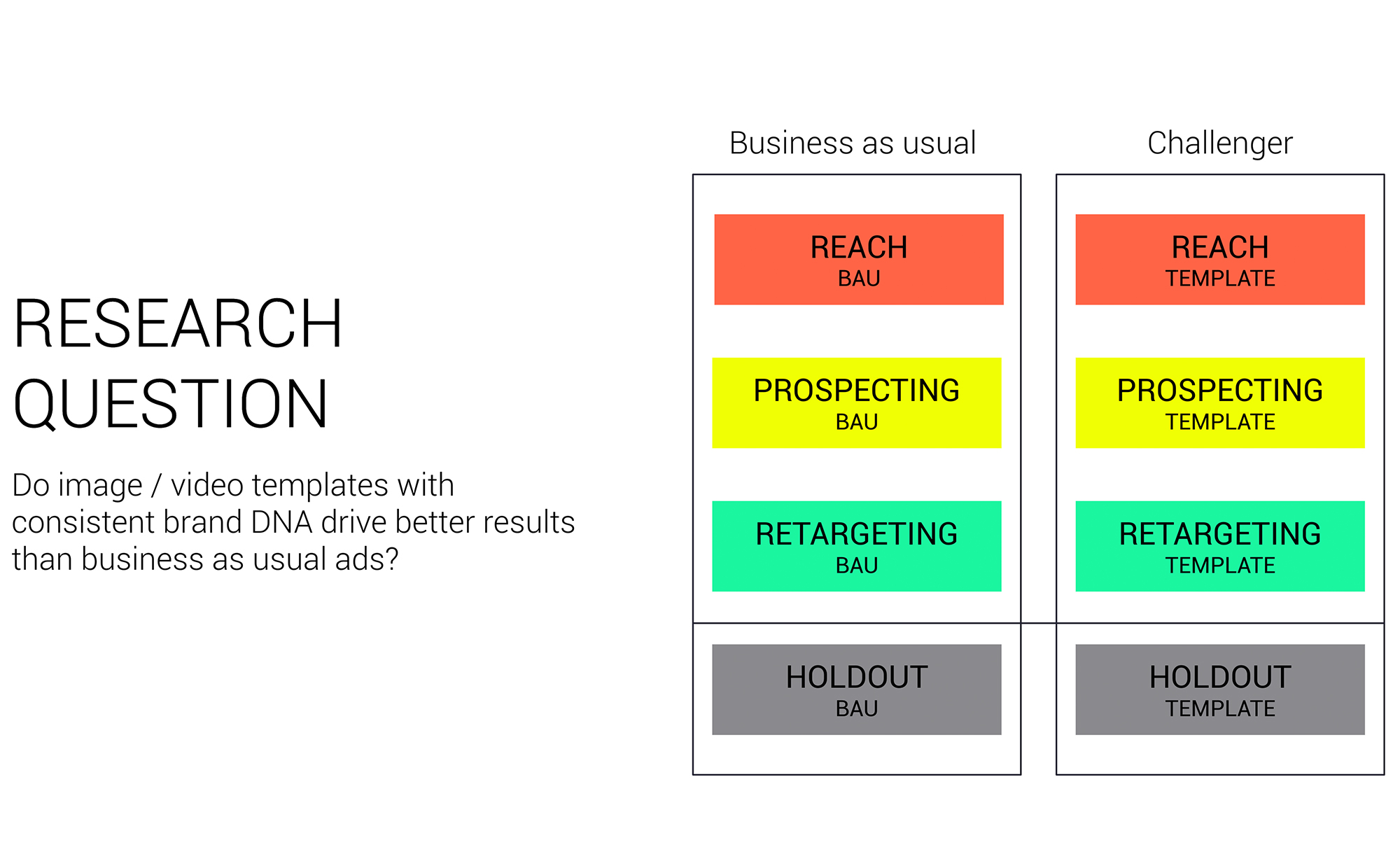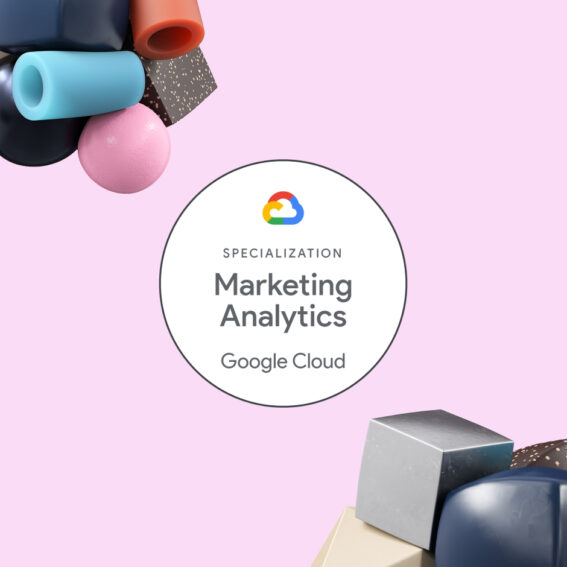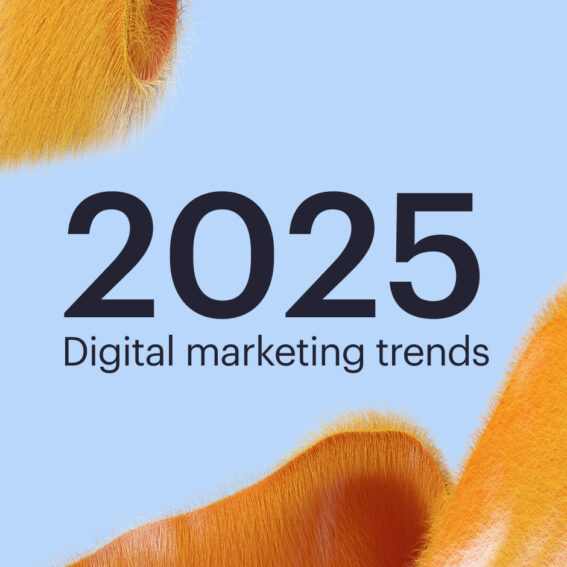Brand DNA Throughout the Funnel

Robert Jurewicz
Paid Social Lead
A few months ago, several of our clients participated in a meta-study conducted by Facebook and Smartly. The hypothesis¹ was: Do video/image templates with a clear and consistent brand identity throughout the funnel drive better results than “business as usual” ads? In this blog post, we will explore the results of the study, talk about why these kinds of studies are increasingly important in marketing, and what we learned from it.
Yet another case against “silofication” of marketing
While reading the above hypothesis, some people will likely react along the lines of: “Of course it’s better to have a clear and consistent brand identity than not! I don’t need a study to show me that.” With this in mind, we need to examine why there is, indeed, a need for such a study.
Facebook provides a great tool called the Ad Library where you can see all ads currently being run for a certain advertiser. Using this tool, it’s easy to see how many brands (even large, established ones!) lack a consistent red thread throughout all the ads – and that’s just within the Facebook platform.
One example of a brand that does have consistent branding is Nike, but there are quite a few other great examples as well.
It’s interesting to think about why so many marketers are quick to believe it’s common knowledge that showing a clear and consistent brand identity yields better results – when even large brands often can’t seem to get this right.
Part of the explanation might be that many companies today are heavily “silo-fied”; in other words, different departments are in charge of various pieces of a media plan with little in common apart from being part of the same organization. Attempting to unify at least the brand messaging across various departments and media channels can be one of the first small steps towards a more holistic approach to marketing.
Another partial explanation might be that to have a consistent brand DNA is easier said than done. There are many parts of a brand that can be used to create a consistent red thread, messaging, colours, tonality, fonts, logotypes et cetera. Figuring out which of these elements should always be included can be difficult and time-consuming, not to mention doing it in a data-driven fashion.
 What we learned
What we learned
The setup of the study was fairly straightforward: Participating companies had their in-house designers collaborate with Smartly to design ad templates for each of the different campaign types that were being run on Facebook (brand awareness, conversions etc.). We then created lift studies on Facebook to measure the impact of ads using a brand template (think of the Nike example above with consistent colors, framing and logo) compared to business as usual, with respect to both cost per incremental lift in consideration as well as incremental lift in ROAS.
(NB: Keep in mind that the brands that participated are fairly large companies that have a strong brand identity but might have been struggling to communicate it in a cohesive manner.)
The results, in this case, spoke for themselves: aggregated across the participating brands we saw a 23% reduction in cost per consideration lift along with a 34% increase in incremental ROAS when using the templates.
Of the two measured metrics, the more surprising is perhaps how large the impact was on sales performance. This finding reinforces how important brand consistency is even in sales-oriented campaigns.
We also learned two more very valuable lessons
First, using creatives as a foundation is a great way of bringing together different departments. As specialization of labor increases, the ad creative itself is often a piece of the marketing puzzle that most marketers can relate to. Using that as a starting point to collaborate across marketing and sales departments was in our case very successful and opened possibilities for more projects down the line.
Secondly, we learned how powerful of a tool Facebook’s lift studies can be. The self-serve lift study tool has been available on the platform for quite some time, yet advertisers, as well as agencies, are, in my humble opinion, only just starting to uncover the potential of such a tool.
Facebook’s experiments using lift studies are currently the closest thing to a perfect test environment that exists broadly available to the public due to Facebooks ability to separate audiences based on people rather than cookies. While many advertisers have understood the value in utilizing lift studies to better quantify the baseline value of Facebook advertising, there are so many more applications for this tool. You can use it to test different creative strategies and different brand concepts – but you can also go even further and run tests on Facebook to find out which creative concepts work best, and maybe even influence important decisions in the production of your next big-budget TV shoot.
The study showed, in no uncertain terms, how impactful a consistent brand DNA can be both in terms of brand recognition and sales. Moreover, it created a bridge between marketing and sales departments to collaborate on a common piece of their strategy, the ads.
Last but not least, we learned what a powerful tool Facebook lift tests can be in generating insights that can be applied to all kinds of marketing. Digital channels boast a large competitive advantage over traditional media in being able to generate and report results in near real-time and the marketers who are able to fully utilize that will likely be the long-term winners.
¹ Source: Facebook’s pilot study ”The value of a clear brand DNA through the whole funnel”, based on five multi cell brand and conversion lift studies


